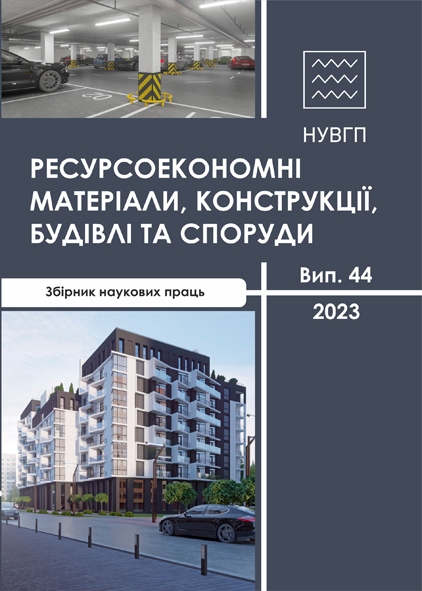DETERMINATION OF INTERLAYER STIFFNESS FAMILY FOR CALCULATING THE EFFECTIVE THICKNESS OF MULTILAYERED GLASS PLATES
DOI:
https://doi.org/10.31713/budres.v0i44.31Abstract
The main parameters of polymer interlayers in multilayered glass plates are considered. The values of tensile modulus of interlayer isotropic material for specific load cases are calculated. In design practice, concept of effective thickness is used. Individual provisions of method are presented.
Exact calculation of stresses and deflections of laminated glass is difficult. The main methods of calculating are: 1) analytical calculation using the «effective thickness method». This calculation method is presented in European Standard EN 16612 and Аmerican Standard ASTM E 1300. Other models of «effective thickness» are presented in the studies of L. Galuppi, G. Royer-Carfagni and S.J. Bennison; 2) numerical modeling using the finite element method. Structural behaviour of laminated glass elements can be modeled by a layered shell element.
To calculate the load-bearing capacity and deflections of multilayered glass plates, the calculation method based on the concept of effective thickness according to EN 16612 can be used. The effective thickness method provides an equivalent monolithic thickness based on the interlayer properties and glass geometry. This method offers two separate equations for the Ultimate Limit State (ULS) and the Serviceability Limit State (SLS). Thus, the effective thickness can be determined for both stress and deflection calculations.
The interlayer is viscoelastic, and its tensile modulus EL and shear modulus GL can vary significantly at different temperatures T and load durations t. The value of ω, which is used for a specific layer and a specific load case, depends on interlayer stiffness family. Interlayer stiffness family is determined by the modulus value for the highest temperature in the range and for a specific load case. Interlayer stiffness families and equivalent values of ω are given in EN 16613. The greater the shear resistances, the more effectively the glass plies couple and resist deformation under loading.

